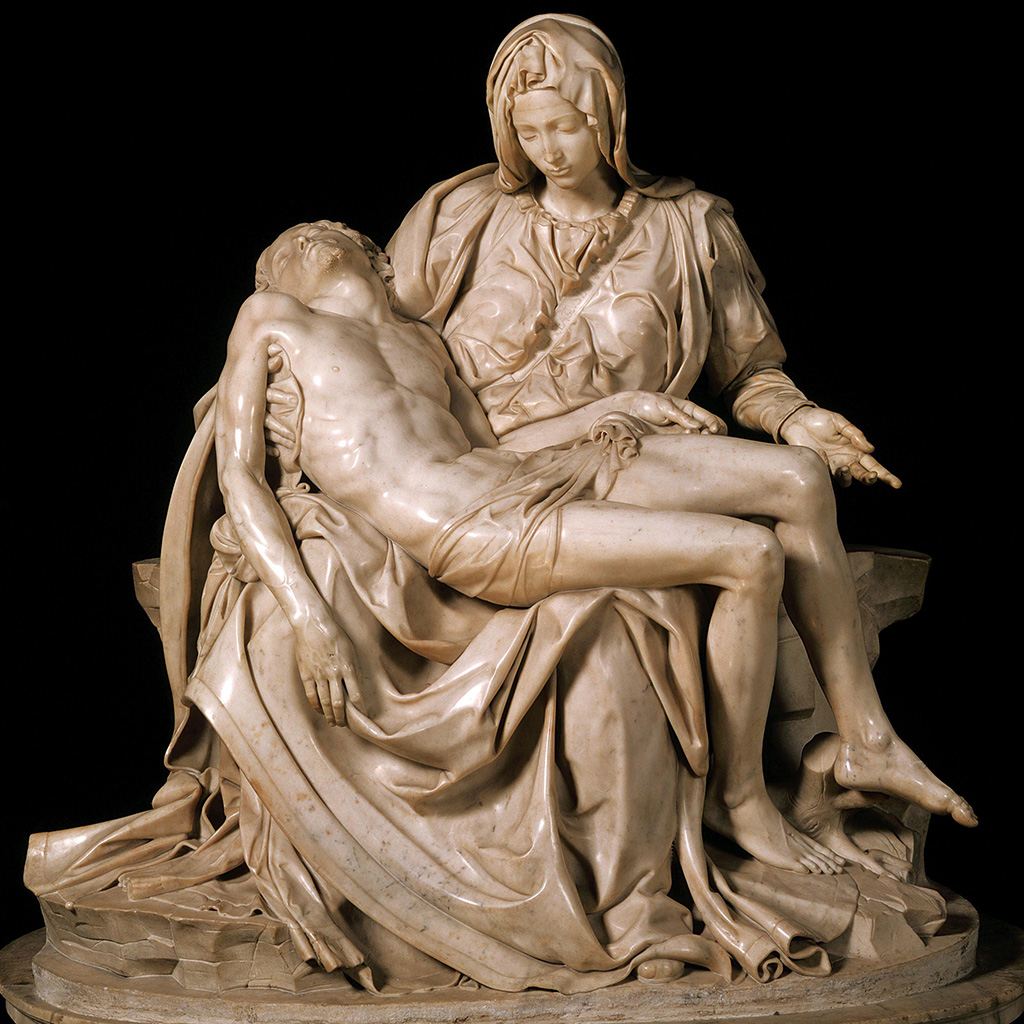

Who among us will deny that our God is an artist beyond compare? From the first cave etchings to the greatest art galleries of the world, humankind's attempts at art have been mainly to imitate His work. For we see sketches of people and animals, portraits of famous personalities, still lifes of flowers and fruit, and magnificent landscapes of valleys and cataracts. Our art imitates His art. It turns out that our God is creative. The first verb in the Scriptures is create. And the first thing He created was light. I do not exaggerate to say that all other art derives from that primal act, for visibility itself arises from light. The famous Latin sentence suggests the self-contained perfection of this first artwork, so elegant: Deus dixit, Fiat lux et lux fit. A haiku. "God said, Let there be light, and there was light."
How great is our God's art? Well, if the standard for art lies in the question, "Does it live?" then we must answer, "Everything He has created is alive! Even His geology is churning with energy that gives rise to new life, as we well know on the Big Island of Hawaii where the world's tallest volcano, the world's largest volcano, and the world's most active volcano all reside. And this marvel of life fills us with wonder as we watch even the humblest insect that exhibits its mysterious miracle of animation. we shall never understand it, much less fashion it ourselves. Humankind may aspire to extinguish the spark of life, but that is as close as we shall ever get to His sacred artform. Shakespeare's sentences four centuries ago reveals man's feeble case. Othello gazing at the sleeping wife, whose life he will take, says:
|
...but once put out thy light,
Thou cunning'st pattern of excelling nature, I know not where is that Promethean heat That can thy light relume. When I have pluck'd the rose, I cannot give it vital growth again. |
"That cunningest pattern of excelling nature" — Life, that magic, that holy stirring, that godlike bundle of voice and motion and mind, that art ... which proceeds alone from the finger of God.
How deep is our God's art? Why no sooner has one of His perfections been broken, as in Eden, than in its brokenness we find still greater perfections emerging: from despair to hope; from defilement to redemption; from death to restored life. The season of Spring itself is a brilliant and miraculous display of His power, of living colors and textures that dazzle with their variety and intensity, and intoxicate with their fragrance, all arising as it does from the season of crystal whites and hushed snowfalls, which have, in their turn, drawn a white curtain before hillsides of blazing orange, gold, and auburn leaves and fragrances of fallen apples lying in orchard fields. Living art.
The medievals saw the depth of our God's art in the paradoxical statement felix culpa: "felicitous guilt" or "happy fall." For human failure, they thought, gave rise to the Incarnation and Atonement, which gave rise to the Sacred Mass, which is none other than the Gate of heaven:
|
Ne hadde the apple taken been, the apple taken bene,
Ne hadde nevere Oure Lady ybene hevene Queen. Blessed be the time that apple taken was: Therfore we mown singen Deo Gratias. |
How subtle is our God's art? If subtlety is the art of managing expectations, then the artwork of His Advent and of Good Friday is nonpareil.
The Psalmist teaches us that the media He loved most to work in was humankind:
|
What is man, that Thou art mindful of him?
and the son of man, that Thou visitest him? |
Now what might this Man be? How should His life go? In what estate would He be born? Answers to these questions have filled to overflowing every artform of which humans are capable: drama, opera, poetry .... What should this Man be? And the Scriptures teach us that in each generation God longed to see a human life for which there is mirth in Heaven. He looked for this life in Eden. He searched for it before the flood. For ten good lives He would have spared Sodom and Gormorrah, good men. And He took joy in Job that one virtuous life might be seen on earth.
What might the life lived by God, then, be? The answer to this riddle can be seen in its very form. For God emptied Himself of glory and power and set aside divine dignity to enter narrow human-ness. Thus, the King of the Universe would be born midst mud and straw though the lowly animals recognized their Master's scent. Thus, the Lord of Hosts suffered Himself to be a carpenter and a boy of the village, not from royal Judah, but rather from despised Samaria and derided as the son of a single mother, for He was called not son of Joseph but son of Mary. Thus, the Almighty God suffered the insolence of His bumptious disciples, yet loving each to the last. Thus, the King of Kings laid down His life on an ignominious Cross midst the jeering of a manic crowd and the abandonment of His every follower. And when He had completed this once-for-all performance of grace and humility, of meekness and honor, he permitted Himself three words, according to St. Luke:
| It is finished. |